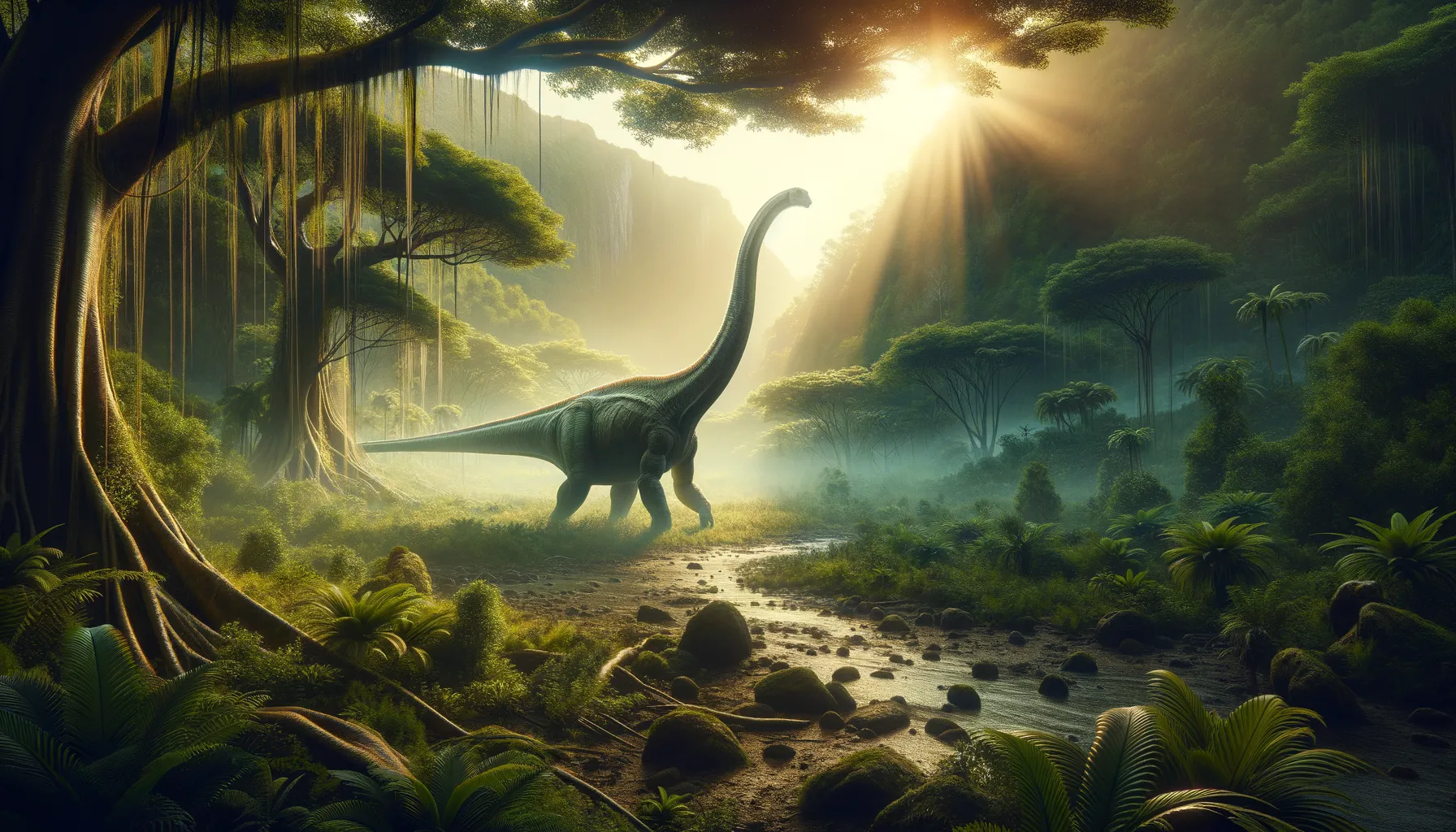
Tornieria
Gentle giant of the African Jurassic era.
Period
Jurassic
Length
Could grow up to 40 feet long.
Height
Stood approximately 12 feet tall at the hips.
Weight
Estimates suggest it weighed around 15 to 25 tons.
Tornieria was a long-necked dinosaur that roamed what is now Africa during the late Jurassic period. Known for its massive body and whip-like tail, Tornieria was a gentle giant, feeding on the lush vegetation of its era. Its fossils provide important clues about the diverse ecosystems that existed in prehistoric Africa and the creatures that inhabited them.
Diet
Tornieria was a herbivore, feeding primarily on plants. Its long neck allowed it to reach vegetation high in trees, as well as those close to the ground.
Hunting
As a herbivore, it did not hunt. Tornieria likely used its size as a defense mechanism against predators.
Environmental challenges
Tornieria faced challenges such as avoiding predation from carnivorous dinosaurs. It also had to adapt to varying climates, from humid periods to droughts, affecting its food supply. Natural disasters, like volcanic activities, might have impacted its habitat.
Speed
It was likely a slow mover due to its massive size.
Lifespan
Estimated to live for several decades.
First discovery
First discovered in Tanzania in the early 20th century.
Fun Facts
- Tornieria was a long-necked dinosaur, similar in appearance to a more famous cousin, the Brachiosaurus.
- It lived during the Late Jurassic period, around 150 million years ago, mainly in what is now Tanzania.
- Tornieria was a herbivore, meaning it fed on plants, and its long neck helped it reach vegetation high in the trees.
- It was named after German scientist Gustav Tornier, who was known for his work on reptiles.
- The remains of Tornieria were first discovered in the Tendaguru Formation, a rich fossil site in Tanzania.
- Tornieria is believed to have been about 25 meters long, making it one of the giants of its time.
- This dinosaur is part of the sauropod group, which is known for having the largest land animals ever to roam the Earth.
Growth and Development
Tornieria's growth was likely slow, taking many years to reach full size. Young dinosaurs would have been vulnerable to predators, so staying with groups offered protection. Over time, their long necks would become more pronounced, aiding in feeding.
Habitat
It inhabited lush, forested environments with plenty of vegetation. Rivers and lakes in its habitat provided necessary water sources for survival. This environment supported a diverse array of prehistoric life, both plant and animal.
Interaction with other species
Tornieria coexisted with numerous plant and animal species, including other herbivores and large predators. They might have formed herds for protection. Their size and tail would act as deterrents against predators.
Natural lifespan
Its natural lifespan may have spanned several decades.
Reproduction
Tornieria likely laid eggs in nests gathered on the ground. These nests might have been in colonies, providing mutual protection. Young Tornieria were probably cared for by their parents until they could fend for themselves.
Social behaviour
They might have lived in groups to provide mutual protection. Group living could also have helped in locating food sources. They used vocalizations and physical gestures for communication.
Fossil locations
Fossils of Tornieria have primarily been found in the Tendaguru Beds of Tanzania. These fossil sites have provided vast insight into life during the late Jurassic period. The remains include partial skeletons and isolated bones, crucial for understanding this dinosaur.
